Sintered Metal Bevel Gear System Noise Source Identification
Introduction
Sintered metal bevel gears are a type of gear mechanism that are manufactured using a sintering process. Sintering involves compacting metal powder into the desired shape and then subjecting it to high temperatures to bond the particles together. Bevel gears are specifically designed to transmit power and motion between intersecting axes. They have conically shaped teeth and are commonly used in applications where torque needs to be transmitted between two intersecting shafts that are not parallel.

Advantages
1. Cost-effective manufacturing
Sintered metal bevel gears are cost-effective to manufacture due to the use of metal powder in the sintering process. This allows for complex shapes and designs to be produced without the need for additional machining, reducing production costs.

2. Design flexibility
The sintering process allows for the production of gears with intricate shapes and designs, providing design flexibility for various applications. This makes sintered metal bevel gears suitable for a wide range of gear system requirements.
3. Good strength and durability
Sintered metal bevel gears are known for their high strength and durability. The sintering process ensures a strong bond between the metal particles, resulting in gears that can withstand heavy loads and harsh operating conditions.
4. Self-lubricating properties
Sintered metal bevel gears have inherent self-lubricating properties due to the porous structure of the sintered material. This reduces the need for additional lubrication, leading to lower maintenance requirements and improved reliability.
5. Noise reduction
Sintered metal bevel gears are designed to minimize noise during operation. The conical shape of the gear teeth and the self-lubricating properties help reduce friction and vibration, resulting in quieter gear systems.
6. Corrosion resistance
The sintered metal used in the manufacturing of bevel gears is often treated with anti-corrosion coatings, making the gears resistant to corrosion and extending their service life in harsh environments.

Working Principle
Sintered metal bevel gears operate based on the following principles:
1. Gear Tooth Engagement
The teeth of the bevel gears interlock with each other, enabling the transfer of power and motion between intersecting axes.
2. Power Transmission
The rotational force applied to one bevel gear is transmitted to the other gear, resulting in the rotation of the second shaft.
3. Axial Force and Thrust
During operation, bevel gears experience axial forces and thrust due to the meshing of the gear teeth. Proper design and lubrication are essential to minimize these forces and ensure smooth operation.
4. Lubrication
Effective lubrication is crucial for reducing friction and wear between the gear teeth. Proper lubrication helps maintain the performance and longevity of the gear system.
5. Load Distribution and Contact Pattern
The design of the gear teeth determines the distribution of the load and the contact pattern between the gears. Optimal load distribution and contact pattern result in efficient power transmission and minimal wear.
6. Manufacturing Considerations
The manufacturing process of sintered metal bevel gears involves precise control of the sintering parameters, such as temperature and pressure, to ensure the desired gear properties and performance.
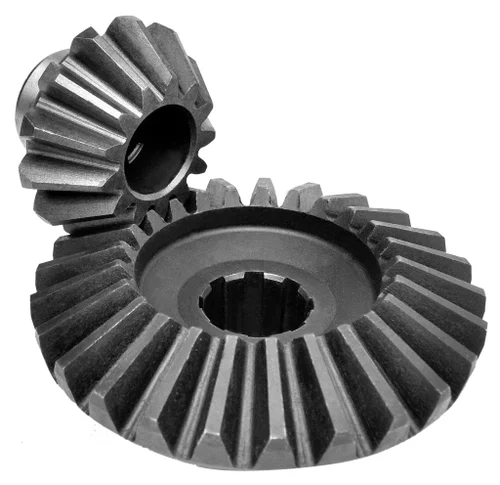
Applications
Sintered metal bevel gears find applications in various industries, including:
1. Automotive
Sintered metal bevel gears are used in automotive powertrain systems for transmitting power between the engine and the wheels. They are also employed in steering systems and differentials.
2. Industrial machinery
These gears are utilized in various industrial machinery applications, such as conveyor systems, machine tools, and agricultural equipment.
3. Aerospace
Sintered metal bevel gears are crucial components in aerospace applications, including aircraft engines, landing gear systems, and flight control mechanisms.
4. Construction and mining
Bevel gears find application in construction and mining equipment, such as excavators, cranes, and drilling rigs.
5. Power generation
These gears are employed in power generation systems, including wind turbines, hydroelectric plants, and gas turbines.
6. Marine
Bevel gears are used in marine applications, such as ship propulsion systems, steering systems, and winches.
7. Textile industry
The textile industry utilizes bevel gears in various machinery, such as spinning machines, weaving machines, and dyeing equipment.
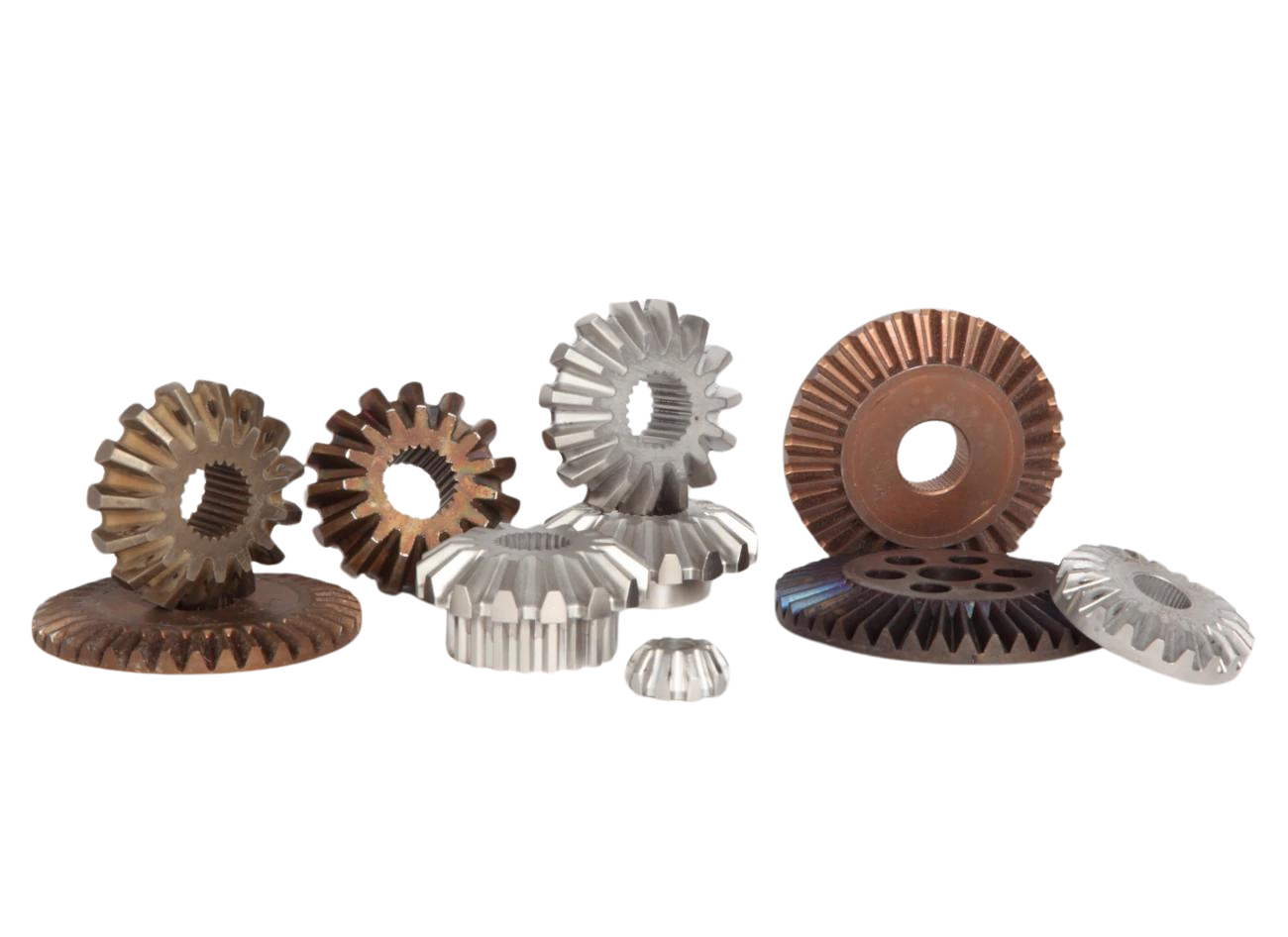
Installation and Maintenance
Installation:
Proper installation is crucial for ensuring the optimal performance of sintered metal bevel gears. The key installation considerations include:
1. Proper Alignment
The gears should be aligned accurately to prevent misalignment, which can lead to increased noise, vibration, and premature wear.
2. Mounting
The gears should be securely mounted to avoid any movement or misalignment during operation. Proper fastening methods and torque control should be employed.
3. Lubrication
Appropriate lubrication is essential for reducing friction and wear between the gear teeth. The lubricant should be selected based on the operating conditions and manufacturer’s recommendations.
4. Torque Control
The torque applied to the gears should be controlled within the recommended limits to prevent excessive loading and premature failure.
Maintenance:
Regular maintenance is crucial for ensuring the longevity and reliable performance of sintered metal bevel gears. The key maintenance practices include:
1. Regular Inspection
Periodic inspection of the gear system helps identify any signs of wear, damage, or misalignment. Prompt corrective actions can be taken to prevent further issues.
2. Lubricant Monitoring
The condition of the lubricant should be monitored regularly to ensure its effectiveness. Contaminated or degraded lubricant should be replaced promptly.
3. Cleaning
The gear system should be cleaned regularly to remove any dirt, debris, or contaminants that can interfere with proper gear operation.
4. Wear Measurement
Wear measurements should be performed periodically to assess the condition of the gear teeth and predict the remaining service life. Measurements should be compared to the manufacturer’s specifications.
5. Repair or Replacement
If any significant wear, damage, or misalignment is detected, appropriate repair or replacement should be carried out to restore the gear system’s performance.
6. Documentation
Maintenance activities, including inspections, repairs, and replacements, should be documented for future reference and to establish a maintenance history.
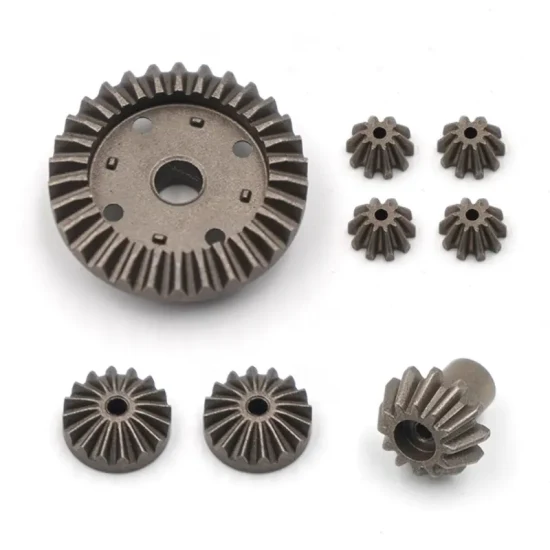
Selecting the Right Sintered Metal Bevel Gear
Choosing the appropriate sintered metal bevel gear for a specific application involves considering the following factors:
1. Application Requirements
The gear selection should meet the specific requirements of the application, including torque, speed, operating conditions, and expected lifespan.
2. Gear Design and Material
The gear design and material should be chosen based on the specific load, operating conditions, and environmental factors. The gear design should optimize load distribution and minimize noise and vibration.
3. Load Capacity
The gear’s load capacity should match or exceed the maximum load expected in the application. This ensures reliable operation and prevents premature failure.
4. Efficiency and Power Loss
The gear’s efficiency and power loss characteristics should be considered to minimize energy consumption and maximize system performance.
5. Lubrication Requirements
The gear’s lubrication requirements should be assessed to ensure compatibility with the application’s operating conditions and lubrication system.
6. Noise and Vibration
The gear’s noise and vibration characteristics should be evaluated to meet any specific noise requirements and ensure smooth and quiet operation.
7. Manufacturer Reputation and Support
The reputation and support provided by the gear manufacturer should be considered to ensure reliable product quality, technical assistance, and after-sales support.
8. Cost Considerations
The cost of the gear should be balanced with the desired performance and reliability to achieve the best value for the specific application.
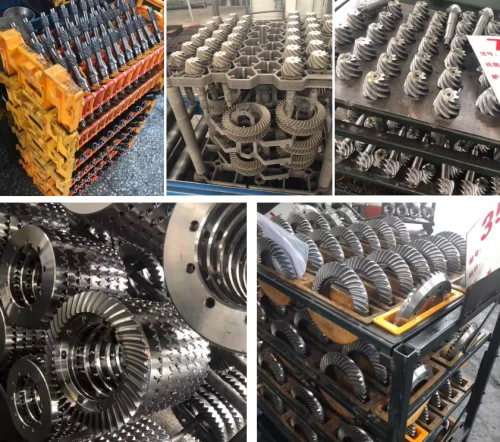
Shaoxing Chaoli Company
Shaoxing Chaoli is a professional manufacturer of gears in China. The company provides high-quality sintered metal bevel gears and other gear products to various industries. The company’s profile includes:
? Our products are exported to different countries such as Spain, the Netherlands, the United States, South Korea, Turkey, and Russia.
? We sincerely hope to help customers develop new products and solve technical and quality problems.
? We prioritize meeting the needs of users with high-quality products, fair prices, and perfect services.
? We adhere to the principles of quality first, timely delivery, and credit first.
? We treat every business partner sincerely and wholeheartedly welcome friends from the business community to cooperate with us to develop together and create brilliance.
? Besides sintered metal bevel gears, Shaoxing Chaoli also offers other gear products such as Worm Gear, spiral bevel gear, Helical Gear, Spur Gear, plastic gear, and metric gear rack.
? Customers are welcome to inquire about customized products.
Shaoxing Chaoli is committed to producing high-quality gears and providing excellent customer support. With a team of experienced engineers and advanced production facilities, Shaoxing Chaoli has earned a strong reputation in the industry.
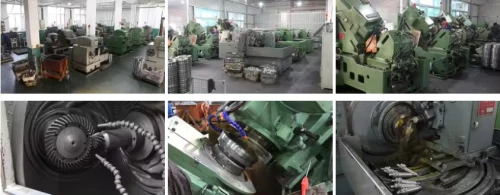
The developing Shaoxing Chaoli currently has hundreds of employees, including many engineers, with fixed assets of 20 million yuan and an annual output value of 50 million yuan. The company has a complete set of strict quality management systems and is equipped with a series of precision measuring instruments such as optical projectors and 16 full-process production monitoring systems. Shaoxing Chaoli has considerable competitiveness in the same industry.